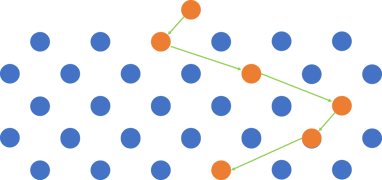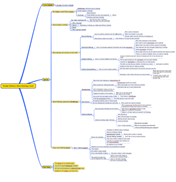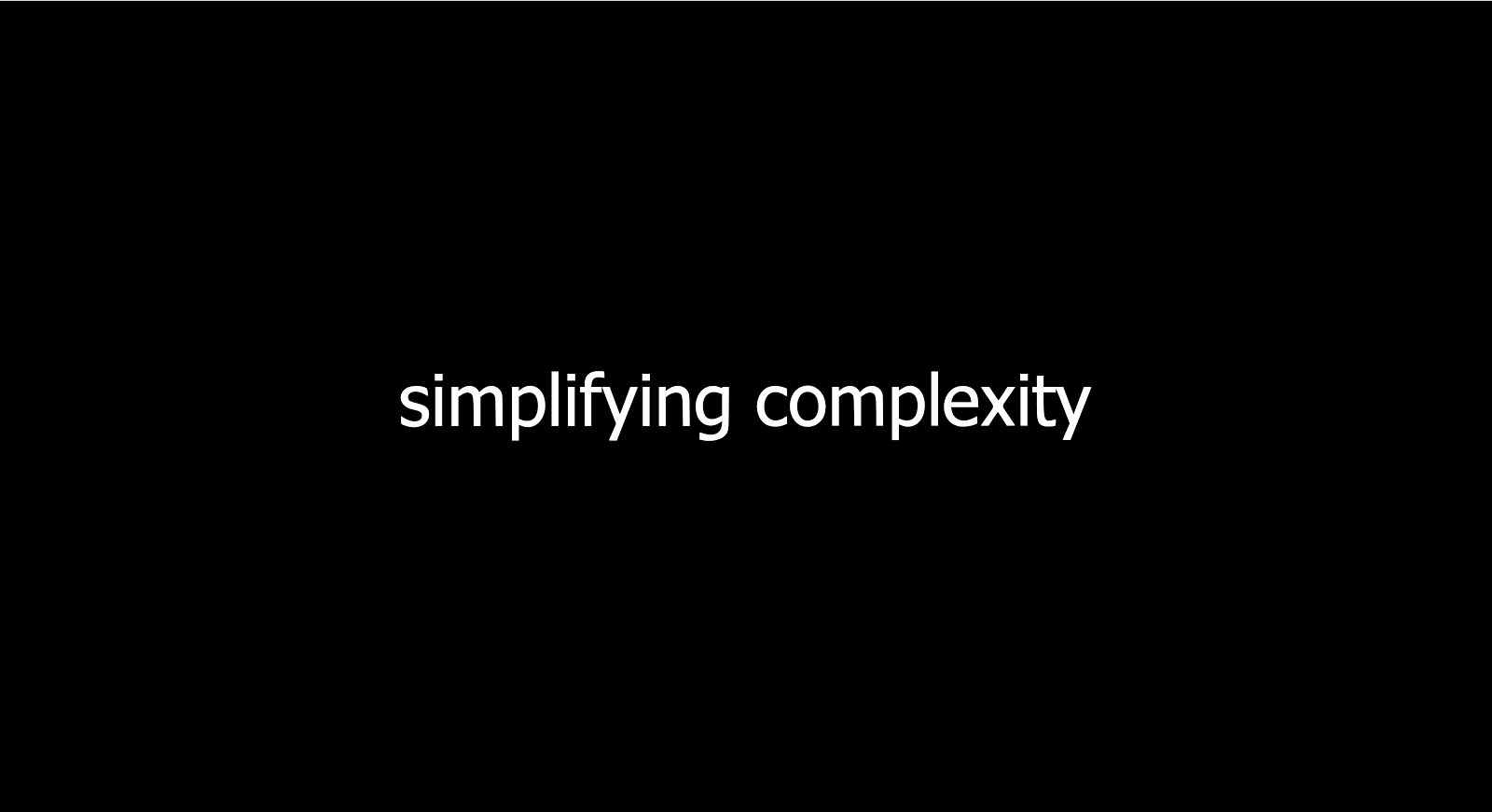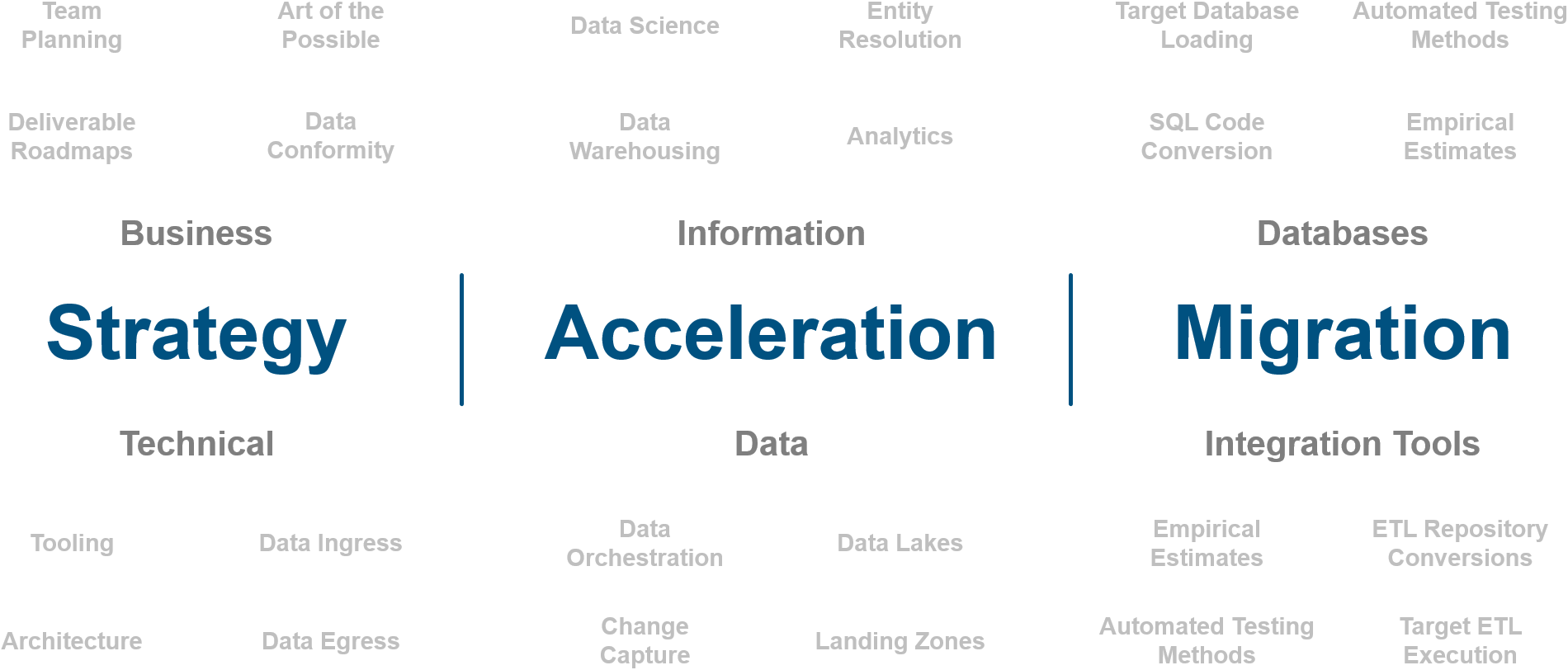One of the main things that organizations realize as they mature is that raw data is awful to work with. There is just no audience scalability or coordination in it. Imagine having to feed thousands of people the information they need by just giving them raw data. The informational output would be different based on how each individual decided to write the conformity logic. Obviously, it's not how to do things. So how do you get there?
Top-Down or Bottom-Up?
There are two methods that data practitioners take for conforming data: Top-Down, or Bottom-Up. Bottom-Up attempts to derive the conformity logic from the data itself. Top-Down derives the conformity requirements based on business stakeholder requirements. To cut to the chase...you want Top-Down, or at least you need to have an amazing excuse to do Bottom-Up. Way too many organizations have wasted their budgets on Bottom-Up projects that got near 0 use from the business stakeholders after being implemented.  What this means is that the business stakeholders must be interviewed.
What this means is that the business stakeholders must be interviewed.
To some technical stakeholders, the prospect of interviewing the business can be intimidating. This is often because they don't want to appear unaware of how the business runs by asking questions that might sound "dumb". In fact, at times the reason organizations default to Bottom-Up approaches is rooted in this fear. This fear isn't necessarily unfounded, as the business stakeholders are usually represented by executive management in the organization when such interviews take place. So without question, the value of these interviews cannot be understated. Being able to align both the process of refining data and/or the definition of that ultimate refinement are the deliverables. So one of the most common questions asked of Intricity is, "What questions do you ask?"
Conversation With a Peer
The ingredients to a well-facilitated interview session can't be boiled down to a fully predetermined list of questions. The key in conducting such interviews is to not fear the vulnerability of your ignorance. This is highlighted in Patrick Lencioni book titled "Getting Naked: A Business Fable About Shedding The Three Fears That Sabotage Client Loyalty" (not exactly the best book for a plane ride because from a distance the "Getting Naked" appears to be the title). Often it's the "dumb questions" that illicit the most meaningful responses and gain the trust of executives. Obviously, the chest-pounding egocentric consultant is not the person you want for these kinds of interviews. After one of the facilitated sessions Intricity ran, one of the technical stakeholders said, "I learned more about my organization today than I have in the last 10 years, but a lot of the questions you asked weren't on the list you sent me." The reason for this is quite simple. This isn't an interview; this is a conversation. If business stakeholders feel like they're being crammed into a technical fill-in-the-blank session, then they will default to their position of "give me all the data." Capturing requirements is a business-process conversation that doesn't have a regimented list of questions.  Yes, the top-level questions are quite predictable as the conversation must start somewhere, but the follow-up questions flow just like a peer-to-peer conversation about their business, their processes, their competitors, their issues, their attempted solutions, etc. While the Intricity Master Facilitator is engaging this conversation, the technical business analyst is capturing meeting minutes in the form of a mind map.
Yes, the top-level questions are quite predictable as the conversation must start somewhere, but the follow-up questions flow just like a peer-to-peer conversation about their business, their processes, their competitors, their issues, their attempted solutions, etc. While the Intricity Master Facilitator is engaging this conversation, the technical business analyst is capturing meeting minutes in the form of a mind map.  These meeting minutes act as a navigable representation of the stated business user requirements.
These meeting minutes act as a navigable representation of the stated business user requirements.
Top Level Questions
So what are some of the top-level questions that often start the conversation? Intricity has a number of interview starting points. The questions below are some common streams and certainly don't represent an exhaustive list.
- Where is your business focus?
- What are your primary responsibilities?
- What are the objectives of your organization?
- How do you know you’re doing well?
- What are the key business issues you face today?
- Describe your products (or other key business dimensions such as customer or vendor)?
- How often do these categorizations change?
- What are the gaps in your business analysis that are holding you back?
- Where do you feel your competitors have an information edge?
- What information is important to you and your team on an intraday, daily, weekly, monthly, quarterly, and yearly basis?
- What type of routine analysis do you currently perform?
- What analysis would you like to perform?
- How much historical information is required?
- Do you trust the data you receive from other IT systems within the organization?
- How important is planning and forecasting for your group?
- How strong is your group's data analysis skills?
- How do you receive your business information today?
- What are your preferred methods for receiving business information?
- Who's your go-to person when you need quick data or detailed analysis?
- What analysis would you like to perform?
This list is taken from a much deeper question set that Intricity has logged from interviews. The answers to these questions push the organization to dive into a process conversation. The resulting mind map from these conversations is used for downstream deliverables which are pertinent to the organization's immediate needs, whether they be oriented towards blueprinting a future data-to-information process or diving deep into a data architecture to get that Top-Down conformity plan.
As challenging as it can be to interrupt business users with conversations about data and information, it beats the alternative. What alternative is that? It's a starved organization seeking information in a sea of raw data, and islands of discovery that, when bubbled up, only lead to arguments about who's "truth" is correct. Intricity can help you on the journey of building a truth consensus through its Strategy Engagements and asking the right questions is at the heart of that process.
Who is Intricity?
Intricity is a specialized selection of over 100 Data Management Professionals, with offices located across the USA and Headquarters in New York City. Our team of experts has implemented in a variety of Industries including, Healthcare, Insurance, Manufacturing, Financial Services, Media, Pharmaceutical, Retail, and others. Intricity is uniquely positioned as a partner to the business that deeply understands what makes the data tick. This joint knowledge and acumen has positioned Intricity to beat out its Big 4 competitors time and time again. Intricity’s area of expertise spans the entirety of the information lifecycle. This means when you’re problem involves data; Intricity will be a trusted partner. Intricity's services cover a broad range of data-to-information engineering needs:
What Makes Intricity Different?
While Intricity conducts highly intricate and complex data management projects, Intricity is first a foremost a Business User Centric consulting company. Our internal slogan is to Simplify Complexity. This means that we take complex data management challenges and not only make them understandable to the business but also make them easier to operate. Intricity does this through using tools and techniques that are familiar to business people but adapted for IT content.
Thought Leadership
Intricity authors a highly sought after Data Management Video Series targeted towards Business Stakeholders at https://www.intricity.com/videos. These videos are used in universities across the world. Here is a small set of universities leveraging Intricity’s videos as a teaching tool:

Talk With a Specialist
If you would like to talk with an Intricity Specialist about your particular scenario, don’t hesitate to reach out to us. You can write us an email: specialist@intricity.com
(C) 2023 by Intricity, LLC
This content is the sole property of Intricity LLC. No reproduction can be made without Intricity's explicit consent.
Intricity, LLC. 244 Fifth Avenue Suite 2026 New York, NY 10001
Phone: 212.461.1100 • Fax: 212.461.1110 • Website: www.intricity.com


